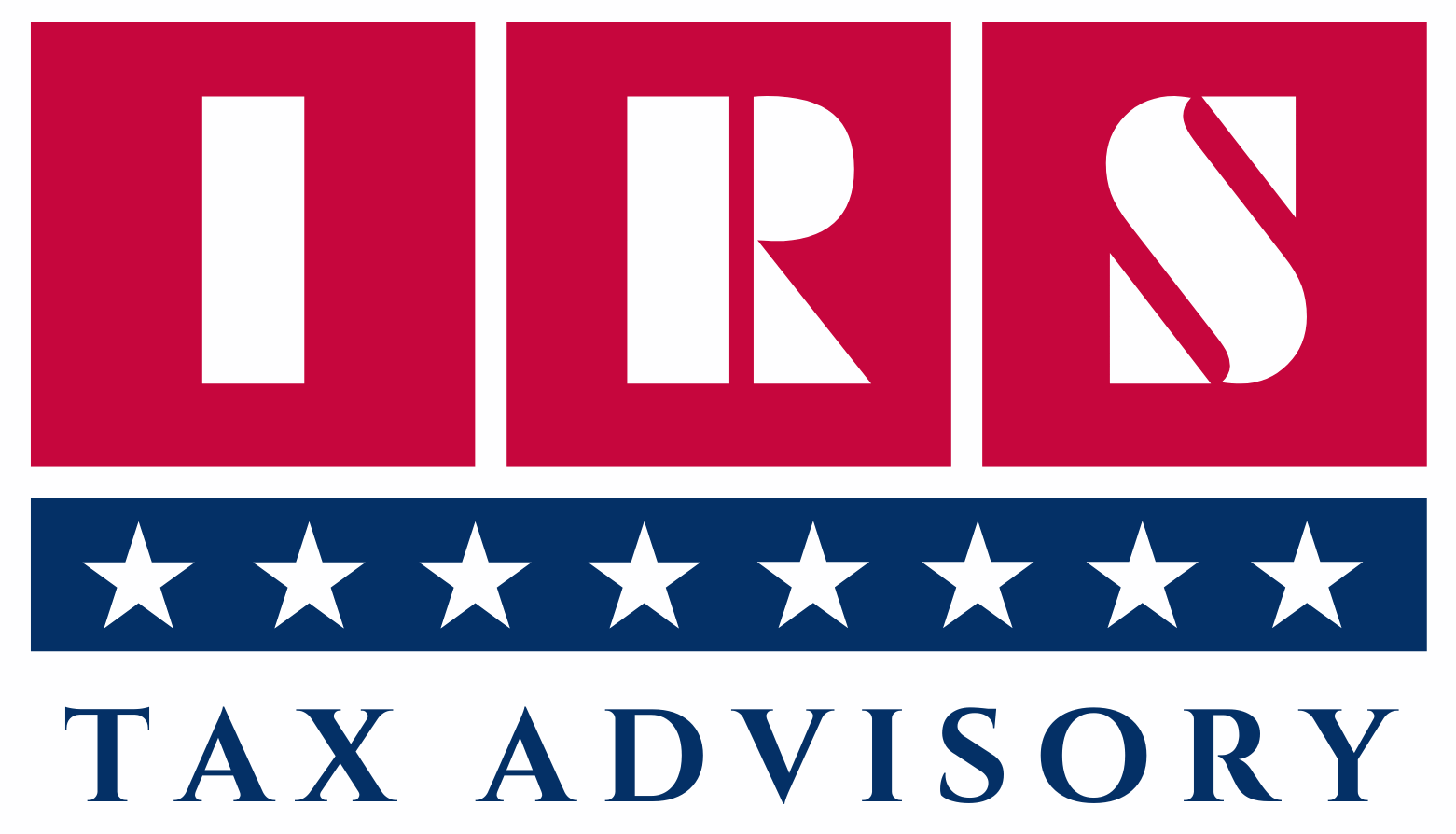Withholding Tax Calculation- Easy Explanation In 2025
Table of Contents
Complete Overview About Withholding Tax Calculation

Are you searching for the simplest way to understand withholding tax calculation, Well, then this amazing knowledgeable ride is just for you. Here, we have simplified all the complexities that makes you confused of better understanding of the concept. So, without getting late, let’s begin.
Withholding Tax Rates
1. Withholding Tax Rates for U.S. Employees
For U.S. employees, withholding tax primarily applies to wages, salaries, bonuses, and other compensation. The withholding tax amount is based on:
- IRS Tax Brackets: The U.S. federal income tax system uses a progressive tax structure where income is taxed at increasing rates across different income brackets.
- Form W-4 Elections: Employees fill out Form W-4 to provide information about their filing status, dependents, and other adjustments that affect withholding.
How it works:
- Employers use the employee’s W-4 details combined with IRS tax tables to calculate the appropriate withholding amount from each pay check.
- The withholding amount changes if the employee updates their W-4 or if tax brackets are updated by the IRS.
- The withheld amount represents a prepayment of the employee’s annual income tax liability.
Example
If an employee earns $50,000 annually and claims single filing status with no additional adjustments on Form W-4, the employer calculates withholding based on current IRS tax tables and rates (which could range from 10% to 37% depending on the bracket).
2. Withholding Tax Rates for Non-Resident Aliens (NRAs)
Non-resident aliens (persons who are not U.S. citizens or residents for tax purposes) have different withholding rules depending on the type of income:
a. FDAP Income (Fixed, Determinable, Annual, Periodical Income)
- Includes interest, dividends, rents, royalties, certain scholarships, and other passive income.
- Default withholding rate: 30%
- Reduced or exempt rates: Many countries have tax treaties with the U.S. that reduce or eliminate this withholding tax. To claim these benefits, NRAs must provide proper documentation (e.g., Form W-8BEN).
Example
A foreign investor receives $10,000 in dividends from a U.S. corporation. Without a treaty, $3,000 (30%) is withheld as tax. With a treaty rate of 15%, only $1,500 is withheld.
b. Effectively Connected Income (ECI)
- Income that is effectively connected with a U.S. trade or business, such as business profits earned by a non-resident performing services in the U.S.
- ECI is taxed at regular graduated U.S. income tax rates, similar to residents.
- Tax withholding on ECI can be more complex; sometimes, withholding agents must withhold based on estimated tax liability.
3. Backup Withholding
Backup withholding is a flat 24% tax rate applied under certain circumstances, primarily to ensure tax collection when:
- The taxpayer fails to provide a correct taxpayer identification number (TIN).
- The IRS notifies the payer to impose backup withholding due to underreporting or errors.
- Certain payments, such as interest, dividends, and broker proceeds, are subject to backup withholding.
Backup withholding is separate from regular withholding and applies even if the recipient is a U.S. person.
4. Treaty Benefits and Their Impact on Withholding Tax Rates
Tax treaties between the U.S. and foreign countries aim to:
- Avoid double taxation
- Reduce withholding tax rates on cross-border payments such as dividends, interest, and royalties
- Define tax residency to prevent dual taxation
To utilize treaty benefits, foreign recipients must submit valid documentation (e.g., Form W-8BEN) certifying their eligibility.
5. Summary Table: U.S. Withholding Tax Rates
| Income Type | Withholding Rate | Notes |
| U.S. Employee Wages | Progressive rates (10%–37%) | Based on IRS tax brackets and Form W-4 |
| Non-resident FDAP Income | 30% (default) | May be reduced by tax treaties |
| Non-resident ECI | Taxed at graduated rates | Reported and withheld as per actual income |
| Backup Withholding | 24% flat | Applies when TIN is missing or IRS instructs |
6. Practical Notes for Employers and Payers
- Employers must regularly update withholding calculations based on employee W-4 updates and IRS guidelines.
- Payers to NRAs must identify the nature of income and apply the correct withholding rate.
- Failure to withhold or remit correctly can lead to penalties.
- Correct documentation is critical to apply reduced treaty rates.
- Taxpayers can claim credits for withholding tax when filing annual tax returns.
Withholding Deadlines & Due Dates
1. What Are Withholding Tax Deadlines?
Withholding tax deadlines refer to the specific dates by which payers (employers, businesses, or withholding agents) must deposit the withheld taxes to the tax authorities and file required reports. Meeting these deadlines is crucial to avoid penalties, interest, or legal issues.
2. Importance of Timely Withholding Tax Payments
- Governments rely on withholding tax payments for regular revenue flow.
- Late deposits may result in penalties (often a percentage of the amount due).
- Failure to file or deposit can also trigger interest charges on overdue amounts.
- Timely payment reflects good tax compliance and maintains business credibility.
3. Common Types of Withholding Taxes and Their Deadlines (U.S. Focus)
A. Employee Payroll Withholding (Income Tax, Social Security, Medicare)
Who: Employers withholding federal income tax and payroll taxes from employees’ wages.
Deposit Schedule
- Monthly Depositor: If total taxes withheld are less than $50,000 per year, deposits are due by the 15th of the following month.
- Semi-weekly Depositor: If total taxes withheld exceed $50,000 during a lookback period, deposits are due semi-weekly (either Wednesday or Friday depending on payday).
Due Date for Filing
- Form 941 (Quarterly Federal Tax Return): Due by the last day of the month following the end of each calendar quarter (e.g., April 30 for Q1).
- Form W-2 and W-3: Provided to employees and filed with the Social Security Administration by January 31 following the calendar year.
Example
If an employer withholds payroll taxes in March and is a monthly depositor, the deposit is due by April 15.
B. Backup Withholding
- Deposit Deadline: Backup withholding must be deposited according to the employer’s or payer’s deposit schedule (monthly or semi-weekly) as part of payroll tax deposits or separate deposits.
- Reporting: Backup withholding amounts must be reported on Forms 1099 and 945.
- Filing Deadline: Form 945 is due January 31 following the calendar year in which backup withholding occurred.
C. Withholding on Payments to Non-Resident Aliens
Deposit Deadline
- Withholding tax on payments to non-resident aliens (such as FDAP income) must generally be deposited by the 15th day of the month following the month in which the withholding occurred.
Reporting
- Use Form 1042 (Annual Withholding Tax Return for U.S. Source Income of Foreign Persons) and Form 1042-S to report payments and withholding to the IRS and recipients.
- Form 1042 and 1042-S must be filed by March 15 following the calendar year.
D. State Withholding Tax Deadlines
- Each U.S. state has its own withholding tax rules, deadlines, and deposit schedules.
- Most states align deposit frequencies with federal rules, but it’s essential to check local state tax department guidelines.
- States also require periodic filing of withholding returns, typically quarterly or annually.
4. Key Deposit and Filing Deadlines Summary (U.S. Federal)
| Withholding Type | Deposit Due Date | Filing Deadline |
| Payroll Withholding (Federal Income Tax & FICA) | Monthly: 15th of next month Semi-weekly: Wed or Fri after payday | Form 941: Last day of month after quarter (e.g., April 30 for Q1) Form W-2: January 31 following year |
| Backup Withholding | Same as payroll deposits | Form 945: January 31 following year |
| Withholding on Non-Resident Payments (FDAP) | 15th day of month after withholding | Form 1042/1042-S: March 15 following year |
5. Penalties for Late Payment or Filing
- Failure to Deposit Penalties: Range from 2% to 15% of the unpaid tax, depending on the number of days late.
- Failure to File Penalties: Usually 5% of the tax due per month late, up to 25%.
- Interest Charges: IRS charges interest on any unpaid tax from the due date until paid.
- Potential criminal penalties may apply in severe cases of willful non-compliance.
6. Best Practices to Meet Withholding Tax Deadlines
- Know Your Deposit Schedule: IRS assigns deposit frequency based on tax liability history.
- Use Electronic Payment Systems: IRS’s EFTPS system (Electronic Federal Tax Payment System) is reliable and widely used.
- Maintain Accurate Records: Track withholding amounts and payment dates carefully.
- File Returns on Time: Plan ahead for quarterly and annual filing deadlines.
- Stay Updated: Tax rules and deadlines may change; subscribe to IRS updates or consult a tax professional.
7. International Withholding Tax Deadlines (General Overview)
- Many countries require withholding tax remittance by the 15th day of the month following payment or within a specified number of days after the payment date.
- Filing deadlines for withholding tax returns vary, commonly ranging from monthly, quarterly, to annual filings.
- Non-compliance in international jurisdictions often leads to penalties similar to the U.S., emphasizing the importance of understanding local rules.
Summary
| Aspect | Key Point |
| Deposit Deadlines | Often monthly or semi-weekly; depends on withholding amount and payer’s IRS classification. |
| Filing Deadlines | Quarterly (Form 941), annual (Form W-2, 1042), or as prescribed by local rules. |
| Penalties | Can be severe; include percentage penalties and interest. |
| Best Practices | Use EFTPS, maintain records, check deadlines regularly, comply with federal and state rules. |
How to Calculate Withholding Tax ?
The method to calculate withholding tax depends on the type of income, the residency status of the recipient, and the country-specific tax laws. In the U.S., it is commonly calculated for:
- Employee wages (using IRS tax tables)
- Non-resident income (fixed percentages)
- Investment or freelance payments (with flat or backup rates)
Step-by-Step Process to Calculate Withholding Tax (U.S. Employees)
For wages & Employee
For wages and salaries, the IRS provides a structured process using Form W-4 and Publication 15-T.
Step 1: Collect Empoyee’s Form W-4
- This form provides essential details:
- Filing status (single, married, head of household)
- Number of dependents
- Other income and deductions
- Additional withholding amounts
Step 2: Determine the Employee’s Gross Wages
- This includes all earnings (salary, bonuses, commissions) for the pay period.
- For example, if an employee earns $3,000 biweekly, this is the base amount.
Step 3: Use the IRS Wage Bracket or Percentage Method (Pub 15-T)
- Employers can use IRS-provided wage bracket tables or percentage method tables based on payroll frequency.
Example using 2024 percentage method:
| Income Range (Biweekly – Single) | Tax Rate |
| Up to $1,100 | 10% |
| $1,101–$3,825 | 12% |
| $3,826–$8,875 | 22% |
If gross pay = $3,000:
- First $1,100 taxed at 10% = $110
- Next $1,900 ($3,000 – $1,100) taxed at 12% = $228
- Total federal withholding = $338
Note: This is a simplified version; actual calculations use standard deduction allocations and other factors from Form W-4.
For Non-Resident Aliens (NRAs)
Non-resident withholding calculations are simpler, but often stricter:
Step 1: Identify the Type of Income
- FDAP income (e.g., interest, dividends, royalties): flat 30% rate unless a tax treaty applies.
- ECI (Effectively Connected Income): taxed at regular U.S. graduated rates, like residents.
Step 2: Determine the Applicable Rate
- Check if a tax treaty applies to reduce the withholding rate.
- Use Form W-8BEN to certify the foreign recipient’s eligibility for treaty benefits.
Example
- Royalty payment to a non-resident: $10,000
- Default rate: 30%
- Treaty-reduced rate: 10%
- Withholding tax = $10,000 × 10% = $1,000
Backup Withholding (for U.S. Recipients Without Valid TIN)
If a U.S. person fails to provide a valid Taxpayer Identification Number (TIN), backup withholding applies:
- Rate: 24% (flat rate)
- Calculation:
- Freelance payment of $5,000
- Withholding tax = $5,000 × 24% = $1,200
Withholding Tax Calculation Formula
General Formula
Withholding Tax = Gross Income or Payment × Applicable Withholding Rate
Notes:
- For salary: Use progressive tax brackets and W-4 info
- For passive income (dividends, interest): Apply flat or treaty rate
- For contractors or freelancers: Use backup withholding rules when necessary
Special Factors That Affect Withholding Tax
1. Filing Status
- Single, married, or head of household affects tax bracket thresholds.
2. Tax Treaties
- May reduce withholding for non-resident recipients.
3. Form Elections
- Form W-4 for U.S. employees
- Form W-8BEN/W-8ECI for foreign payees
4. Additional Income or Deductions
- Employees may elect to have extra withholding or claim dependents, changing calculations.
Summary Table: Withholding Tax Scenarios
| Type of Income | Who Pays | Calculation Method | Rate |
| Employee Wages | Employer | Based on W-4 and IRS tables (Pub 15-T) | 10% – 37% (graduated) |
| FDAP (Non-resident) | Payer | Flat rate on gross amount | 30% default or treaty rate |
| ECI (Non-resident) | Payer | Use graduated rates like residents | 10% – 37% |
| Backup Withholding | Payer | Flat rate if no valid TIN | 24% |
| Independent Contractor | Payer | Based on Form W-9 or backup withholding | None or 24% if required |
Treaty Considerations Withholding Tax
What Are Tax Treaties?
Tax treaties are bilateral agreements between countries that aim to:
- Prevent double taxation (taxing the same income in both countries),
- Allocate taxing rights between countries,
- Reduce or eliminate withholding tax rates on certain types of income (e.g., dividends, interest, royalties, pensions),
- Improve tax transparency and cooperation between countries.
The United States has income tax treaties with over 60 countries.
Why Are Tax Treaties Important for Withholding Tax?
Without a treaty, U.S. payers must apply:
- 30% default withholding tax rate on most U.S.-source FDAP income (Fixed, Determinable, Annual, or Periodical income) paid to non-residents.
With a treaty:
- The withholding rate may be reduced—often to 15%, 10%, 5%, or even 0%, depending on the income type and treaty provisions.
Common Income Types Covered by Treaties
| Income Type | Default U.S. Withholding Rate | Treaty-Reduced Rate (Example) |
| Dividends | 30% | 5%–15% (varies by treaty) |
| Interest | 30% | 0%–15% |
| Royalties | 30% | 0%–10% |
| Pensions/Annuities | 30% | Varies based on treaty |
| Independent Services | 30% | Often 0% if no permanent establishment |
Claiming Treaty Benefits: Key IRS Forms
To claim reduced withholding under a treaty, the foreign person must properly complete and submit the appropriate IRS withholding certificate:
Form W-8BEN (Individuals)
- Certifies non-U.S. status and residency in a treaty country.
- Identifies specific income types eligible for reduced rates.
Form W-8BEN-E (Entities)
- For foreign corporations, partnerships, or trusts.
- Used to claim treaty benefits for business income.
Form W-8ECI
- For income effectively connected with a U.S. trade or business (ECI).
- Certifies exemption from FDAP withholding; taxed under regular income tax rates.
Example:
A German investor receiving $100,000 in dividends from a U.S. corporation:
- Without treaty: 30% withholding = $30,000
- Germany–U.S. treaty rate: 15% → Withholding = $15,000 (with Form W-8BEN)
Residency and Eligibility Under Treaties
To benefit from a tax treaty, the recipient must:
- Be a resident of a treaty country, as defined by the treaty (usually by domicile, residence, or habitual abode).
- Not be a dual resident (some treaties have tiebreaker rules).
- Be the beneficial owner of the income (e.g., not a pass-through or nominee).
- Submit valid forms before the income is paid.
Key Concepts in Treaties
1. Permanent Establishment (PE)
- If a non-resident has a PE in the U.S., business profits may be taxable in the U.S.
- Without PE, independent services may be exempt from U.S. tax under treaties.
2. Limitation on Benefits (LOB)
- Many treaties include anti-abuse provisions to prevent “treaty shopping.”
- LOB articles restrict benefits to qualified residents of the treaty country.
3. Tiebreaker Rules
- When a taxpayer is considered a resident of two treaty countries, tiebreaker rules determine which country is granted taxing rights.
Penalties for Withholding Failures
Withholding tax compliance is critical for both U.S. and non-U.S. payers. The IRS imposes strict penalties for failures to withhold, deposit, or report withholding taxes properly. These penalties can significantly impact both businesses and individuals.
1. Failure to Withhold
What It Means:
- You, as a payer, did not withhold tax from income that was subject to withholding (e.g., wages, interest, royalties, or contractor payments).
Consequences:
- The IRS can hold the payer liable for the full amount of tax that should have been withheld.
- Interest and penalties accrue on the unpaid amount.
- No defence is available unless you can prove:
- The recipient paid the tax directly (with documentation).
- You had reasonable cause and acted in good faith.
Example:
You pay $10,000 in dividends to a non-resident without withholding 30% (or treaty rate). You can be liable for the full $3,000, plus interest and penalties.
2. Failure to Deposit Withheld Taxes (Trust Fund Recovery Penalty – TFRP)
What It Means:
- You withheld the taxes but failed to deposit them to the IRS on time using EFTPS (Electronic Federal Tax Payment System).
Penalty Rates:
| Days Late | Penalty |
| 1–5 days | 2% |
| 6–15 days | 5% |
| 16+ days | 10% |
| After IRS Notice | 15% |
These are percentage penalties of the unpaid tax amount.
Trust Fund Recovery Penalty (TFRP):
- If taxes are collected from employees (e.g., income tax, Social Security), but not deposited, responsible individuals (e.g., owner, officer, bookkeeper) can be personally liable.
- TFRP = 100% of the unpaid trust fund taxes
Example:
$25,000 in payroll taxes withheld but not deposited → IRS can assess TFRP of $25,000 personally against the responsible party.
3. Failure to File Required Forms
Forms Impacted:
- Form 941 (Quarterly Payroll Tax Return)
- Form 945 (Backup Withholding Return)
- Form 1042/1042-S (Withholding for Foreign Persons)
- Form W-2 / 1099 series (Wage/Contractor Reporting)
Penalties for Late Filing (per return):
| Delay Period | Penalty Per Return (2025, indexed) |
| Up to 30 days late | $60 |
| 31 days to August 1 | $130 |
| After August 1 or not filed | $310 |
| Intentional disregard | $630+ per return (no cap) |
These apply per form, per employee/payee.
4. Incorrect Information Penalty
What It Covers:
- Filing forms with missing or incorrect TINs, names, amounts, or payment codes.
Penalties:
- Similar scale to late filing penalties.
- Intentional disregard of correct information results in the maximum penalty per form without limitation.
5. Failure to Provide Information Return Copies to Payees
- If you fail to furnish W-2, 1099, or 1042-S to recipients on time (e.g., by January 31 or March 15), penalties apply.
Penalties:
- Same penalty structure as §6721 (filing returns), with per-statement and maximum annual penalties.
6. Form W-8 / W-9 Documentation Failures
W-9 (U.S. Persons):
- If not obtained, backup withholding at 24% must be applied. Failing to withhold results in payer liability.
W-8 (Foreign Persons):
- Without a valid W-8BEN or W-8BEN-E:
- You must withhold 30%.
- Failure to do so = payer liability for the full amount, plus penalties.
7. Criminal Penalties (in extreme cases)
In cases of willful neglect or fraud, criminal charges can apply:
Summary Table: Withholding Tax Penalties
| Penalty Type | Trigger | Rate / Amount |
| Failure to Deposit (Form 941, 945) | Late deposit of withheld taxes | 2%–15% of unpaid tax |
| Failure to Withhold | Did not withhold required amount | 100% of tax + interest/penalties |
| Late Filing of Returns (e.g., 1099) | Filed after due date | $60–$310 per return; up to $1.2M/year |
| Late Furnishing to Payees | W-2/1099/1042-S not given to recipients on time | $60–$310 per statement |
| Intentional Disregard | Willfully ignoring filing/furnishing rules | $630+ per form; no limit |
| Trust Fund Recovery Penalty (TFRP) | Willful non-payment of payroll taxes | 100% of unpaid trust fund tax |
Real-World Scenarios: Withholding Tax Explained
Scenario 1: U.S. Employee and Federal Income Tax Withholding
Employee: Sarah, based in California
Employer: U.S. tech startup
Salary: $85,000/year
W-4 Info: Single, no dependents
What Happens:
- The employer uses the IRS tax tables and Sarah’s Form W-4 to determine federal income tax withholding per pay period.
- Federal income tax, Social Security (6.2%), and Medicare (1.45%) are withheld from each paycheck.
Example Paycheck Withholding:
- Biweekly gross pay: $3,269
- Federal income tax withheld: ~$430
- Social Security tax withheld: $202.68
- Medicare tax withheld: $47.40
Takeaway: Accurate Form W-4 filing ensures correct withholding and avoids surprises at tax time.
Scenario 2: Non-resident Individual Receiving U.S. Dividends
Investor: Hiroshi, Japanese citizen living in Tokyo
Investment: U.S. public stocks
Dividend income: $10,000/year
Withholding Without Treaty:
- U.S. withholding agent must apply 30% default withholding on U.S.-source dividends.
- Tax withheld: $3,000
Withholding With Treaty:
- Under the U.S.–Japan tax treaty, dividends may be taxed at 10%.
- Hiroshi files Form W-8BEN claiming treaty benefits.
- Withholding tax: $1,000
Takeaway: Submitting Form W-8BEN and claiming treaty benefits can reduce tax liability substantially.
Scenario 3: Backup Withholding Triggered
Vendor: Independent contractor (U.S. citizen)
Client: U.S. company
Income: $15,000 for freelance work
Issue: Vendor failed to provide a correct SSN on Form W-9
What Happens:
- The IRS requires backup withholding at 24%.
- Company must withhold $3,600 and remit it to the IRS.
Takeaway: Always submit a complete and correct Form W-9 to avoid unnecessary withholding.
Scenario 4: U.S. Company Paying Royalties to Foreign Corporation
Payer: U.S. media company
Payee: UK-based production company
Royalty Payment: $100,000 for film distribution rights
Without Treaty: 30% withholding = $30,000
With Treaty (U.S.–UK): Royalty withholding reduced to 0%–5%
Steps Taken:
- UK company provides Form W-8BEN-E, claiming treaty benefits
- U.S. company verifies treaty eligibility and proper form completion
- U.S. company withholds only $5,000 (5%) instead of $30,000
Takeaway: For outbound U.S. payments, proper tax treaty documentation can yield significant savings for the recipient.
Scenario 5: Failure to Withhold and IRS Penalty
Company: U.S. real estate firm
Payee: German investor
Payment: $50,000 in rental income
Mistake: No withholding applied (should have withheld 30%)
Result:
- IRS determines company failed to withhold $15,000 (30% of $50,000)
- IRS charges:
- $15,000 tax
- Failure to deposit penalties
- Interest
- Possibly Trust Fund Recovery Penalty (TFRP) if willful
Takeaway: U.S. payers are liable for entire unpaid withholding plus penalties, even if the foreign recipient later pays taxes.
Scenario 6: Treaty Benefits Denied Due to Limitation on Benefits (LOB)
Payee: Shell company in Cyprus claiming treaty benefits under U.S.–Cyprus treaty
Payment: $200,000 in interest income
IRS Review: Company lacks real operations, ownership traced to non-Cyprus residents
Outcome:
- IRS denies treaty benefits using LOB clause
- Full 30% withholding tax applied
- Withholding agent also at risk if they failed due diligence
Takeaway: Treaty claims must meet substance-over-form tests—real business presence is required.
Scenario 7: Effectively Connected Income (ECI)
Foreign Individual: French consultant working in the U.S. temporarily
Income: $70,000 from U.S. clients
Action: Files Form W-8ECI and reports income as ECI
Outcome:
- No withholding required by U.S. clients
- Consultant files Form 1040-NR and pays tax at graduated U.S. income tax rates
Takeaway: ECI treatment avoids flat 30% withholding but requires full U.S. tax filing compliance.
Scenario 8: Employer Withholding Error on Payroll
Employee: John, U.S. citizen
Employer: Fails to remit withheld payroll taxes
IRS Action:
- Imposes Trust Fund Recovery Penalty on the company controller
- Penalty = 100% of unremitted taxes (~$45,000)
- Controller is held personally liable
Takeaway: Payroll tax noncompliance can have serious legal consequences for responsible individuals.
Summary: Key Takeaways
- Withholding tax ensures upfront collection of income tax
- Employees, non-residents, and foreign entities are subject to varying rules
- Proper forms, rates, deadlines, and treaty compliance are essential
- Penalties can be severe for improper or missed withholding
Frequently Asked Questions (FAQs)
What Is the Difference Between Federal and State Withholding Tax Calculations?
Federal withholding is based on IRS tax brackets, Form W-4 information, and Publication 15-T. State withholding, however, varies by jurisdiction and uses its own tax tables, exemption rules, and sometimes its own version of Form W-4. Some states (like Texas or Florida) don’t impose income tax at all, while others (like California or New York) have progressive withholding systems with additional local levies.
How Is Backup Withholding Calculated and When Does It Apply?
Backup withholding is a flat 24% rate applied to certain payments (interest, dividends, etc.) when the payee:
- Fails to provide a valid Taxpayer Identification Number (TIN),
- Submits a mismatched or incorrect TIN, or
- Is flagged by the IRS for underreporting income.
It is not calculated based on income brackets—it’s a fixed rate applied directly to gross payments.
How Is Withholding Tax on Retirement Income Calculated?
Withholding on Social Security benefits is voluntary but can be requested at 7%, 10%, 12%, or 22% using Form W-4V. For pension distributions and other retirement accounts like IRAs or 401(k)s, federal withholding is typically:
- 10% default for periodic payments
- 20% mandatory for lump-sum distributions (unless rolled over)
State withholding rules vary and may allow opt-in or require automatic withholding.
How Do Employers Calculate Federal Income Tax Withholding?
Employers calculate federal income tax withholding using data from an employee’s Form W-4, IRS tax brackets, and Publication 15-T (Federal Income Tax Withholding Methods). The two most common methods are:
- Percentage Method
- Wage Bracket Method
Factors include taxable wages, pay frequency, and any additional withholding amounts specified by the employee.
How Is Withholding Tax Calculated for Non-U.S. Persons?
For nonresident aliens and foreign entities, withholding tax is generally 30% of U.S.-source FDAP income (Fixed, Determinable, Annual, or Periodic), such as interest, dividends, or royalties. This rate can be reduced or eliminated under an income tax treaty, provided the recipient submits a valid Form W-8BEN or W-8BEN-E to the withholding agent.
How Do I Use Form W-4 to Adjust My Withholding Tax?
Form W-4 lets employees customize their federal withholding by reporting dependents, additional income, and deductions. By adjusting these fields or entering an extra withholding amount on Line 4(c), you can increase or decrease the amount withheld from each paycheck. A withholding estimator on the IRS website helps calculate accurate withholding based on your unique tax profile.
What Tools Can Help Calculate Withholding Tax Accurately?
The best tools for calculating withholding tax include:
- IRS Withholding Estimator Tool (for employees)
- IRS Publication 15-T (for employers)
- Payroll software (e.g., ADP, Gusto, QuickBooks)
- State-specific tax calculators for regional withholding
These tools help ensure compliance and prevent over- or under-withholding, which could lead to unexpected tax bills or refunds.






